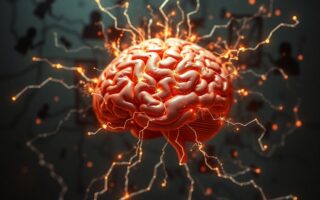Silent Anxiety Attacks: Understanding and Coping
Anxiety disorders affect millions of people worldwide, manifesting in various forms and intensities. While many are familiar with the typical symptoms of anxiety, such as racing thoughts, palpitations, and sweating, there’s another type of anxiety attack that often goes unnoticed: silent anxiety attacks. Unlike traditional panic attacks, which are characterized by overt physical symptoms, silent anxiety attacks primarily manifest as internal struggles, making them challenging to identify and manage.
What Are Silent Anxiety Attacks
Silent anxiety attacks, also known as covert or hidden anxiety attacks, lack the visible signs typically associated with panic attacks. Instead of outwardly expressing distress through behaviors like hyperventilating or trembling, individuals experiencing silent anxiety attacks may appear calm or composed on the surface while grappling with intense psychological turmoil internally. This discrepancy between outward demeanor and internal distress can lead to feelings of confusion and isolation, as sufferers may struggle to articulate or even recognize their own anxiety.
Symptoms of Silent Anxiety Attacks
While silent anxiety attacks may not exhibit overt physical symptoms, they often manifest through a range of internal sensations and cognitive disturbances. Common symptoms include:
- Racing Thoughts: Individuals may experience a whirlwind of anxious thoughts, worries, and catastrophic scenarios racing through their minds, making it challenging to concentrate or relax.
- Increased Heart Rate: Despite the absence of visible signs, individuals may perceive their heart racing or pounding in their chest, a sensation known as palpitations.
- Difficulty Breathing: Some may feel as though they’re unable to catch their breath or experience a sensation of suffocation, even though their breathing remains normal.
- Muscle Tension: Silent anxiety attacks can cause muscle tension and tightness, particularly in the neck, shoulders, and jaw, leading to discomfort and even pain.
- Nausea or Digestive Discomfort: Anxiety can affect the digestive system, resulting in symptoms such as nausea, indigestion, or stomach pain.
- Dizziness or Lightheadedness: Some individuals may feel dizzy or lightheaded during a silent anxiety attack, which can contribute to feelings of disorientation and imbalance.
Triggers and Causes
Like traditional anxiety attacks, silent anxiety attacks can be triggered by a variety of factors, including stress, trauma, social situations, or specific phobias. These attacks often stem from an overactive stress response, with the body’s fight-or-flight system kicking into high gear in response to perceived threats, whether real or imagined. Genetic predisposition, neurotransmitter imbalances, and environmental factors can also contribute to the development of silent anxiety attacks.
Coping Strategies
Coping with silent anxiety attacks requires a multifaceted approach that addresses both the immediate symptoms and underlying triggers. Here are some strategies to help manage silent anxiety attacks:
- Deep Breathing Exercises: Practice diaphragmatic breathing or other relaxation techniques to calm the body’s stress response and promote relaxation.
- Mindfulness and Meditation: Engage in mindfulness practices to cultivate present-moment awareness and reduce the impact of anxious thoughts.
- Cognitive-Behavioral Therapy (CBT): Work with a therapist to identify and challenge maladaptive thought patterns and develop effective coping mechanisms.
- Regular Exercise: Incorporate regular physical activity into your routine to reduce overall stress levels and promote mental well-being.
- Healthy Lifestyle Habits: Prioritize adequate sleep, nutrition, and hydration to support overall physical and mental health.
- Seek Support: Reach out to friends, family, or mental health professionals for support and guidance during difficult times.
- Medication: In some cases, medication may be prescribed to help manage severe anxiety symptoms. Consult with a healthcare provider to explore appropriate treatment options.
Conclusion
Silent anxiety attacks may not be readily apparent to observers, but their impact on individuals’ mental and emotional well-being can be significant. By recognizing the signs and symptoms of silent anxiety attacks and implementing effective coping strategies, individuals can learn to manage their anxiety more effectively and improve their overall quality of life. Seeking support from healthcare professionals and loved ones can provide invaluable assistance on the journey toward healing and recovery from silent anxiety attacks.














